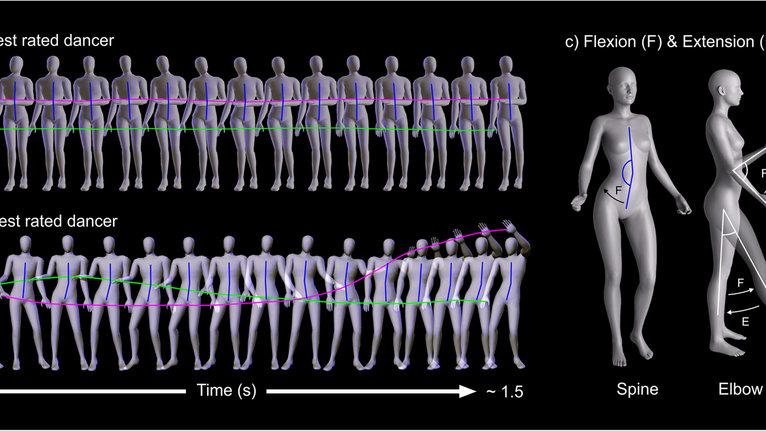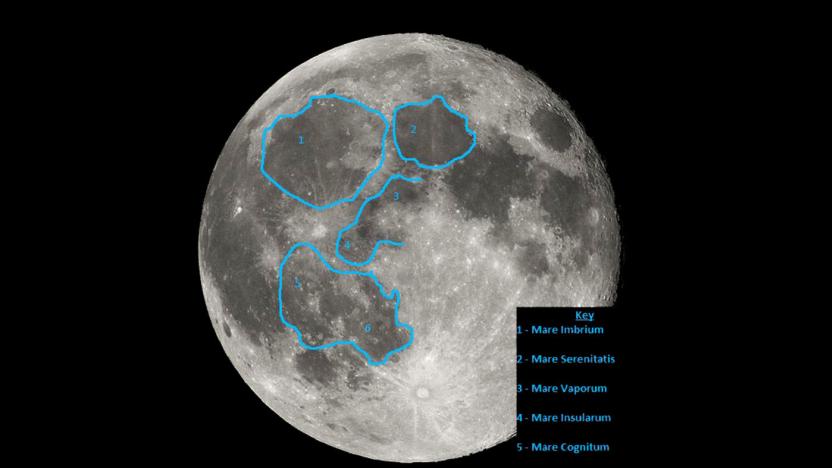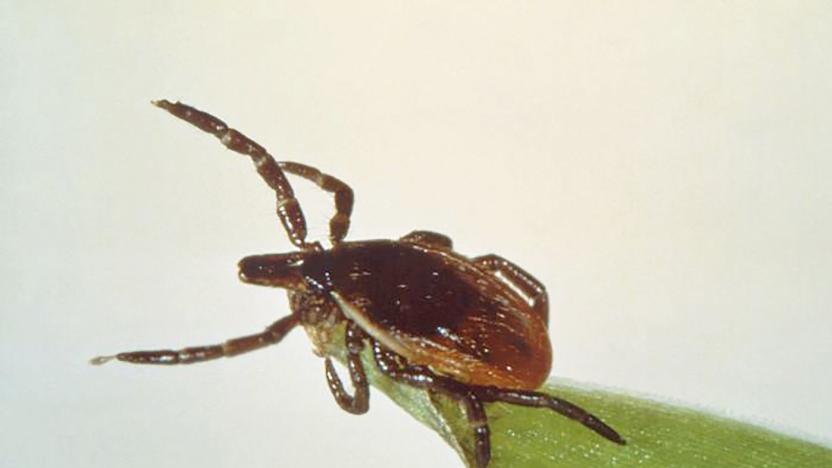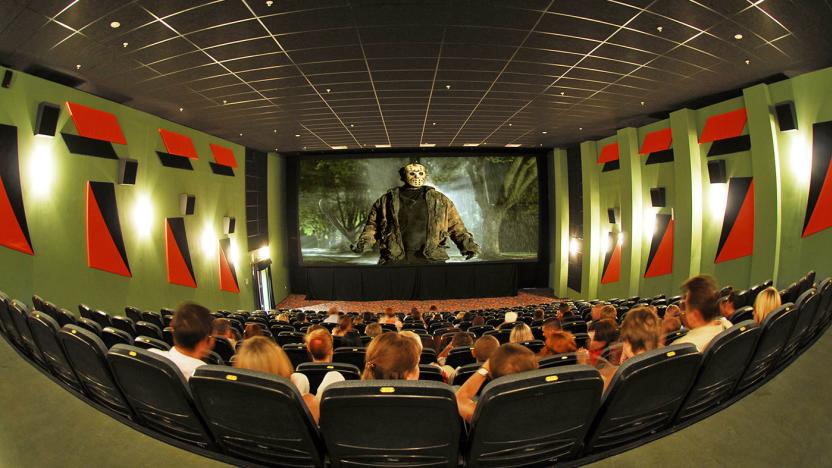study
Latest

Implants enable richer communication for people with paralysis
John Scalzi's science fiction novel Lock In predicts a near future where people with complete body paralysis can live meaningful, authentic lives thanks to (fictional) advances in brain-computer interfaces. A new study by researchers at Stanford University might be the first step towards such a reality.

Science confirms what we already know: It's all in the hips
To find out what people think of lady dancing, you don't need to head to the club. Instead, researchers in the UK outfitted female dancers with motion capture rigs, much like the ones that bring digital movie characters like Gollum or Jar Jar Binks to life. According to science, then, women who swing their hips while moving their legs and thighs independently are rated high on attractiveness.

Scientists found a way to bring back lost tomato flavor
Tomatoes don't taste like they used to, because breeders have been prioritizing other traits like pest and disease resistance. To bring that lost flavor back, a team of researchers from the University of Florida went on a quest to find the chemical combinations that make tomatoes tasty. First, they sequenced the DNA and examined the flavor-associated chemicals of 398 modern, heirloom and wild tomatoes. After that, they selected 160 samples out of the 398 and had 100 subjects rank them according to taste.

VR out-of-body experience could help assuage the fear of death
A virtual reality experience developed by researchers from the University of Barcelona could help people with a crippling fear of death. Research professor Mel Slater and his colleagues made 32 subjects wear Oculus headsets and black suits. They also attached a bunch of movement trackers and vibrators to their ankles and wrists. With those components in place, the subjects' virtual bodies could match their real movements in the experience. Every time a VR ball hits their wrist or ankle, the vibrators would go off, as well. Both elements helped fool the volunteers' brain into thinking that the virtual body was their own, similar to the rubber hand illusion.

MIT: Carpooling services could replace most NYC cabs
Researchers have proved mathematically what you probably already knew: Carpooling services are more efficient, less polluting and less costly than traditional taxis. Using data from three million New York City taxi rides, a team from from MIT's CSAIL computer science lab found that just 3,000 vehicles from services like UberPOOL and Lyft Line could replace NYC's 14,000 strong cab fleet. What's more, they'd reduce congestion by three times, barely impact travel times, and you'd only have to wait an average of 2.7 minutes for a ride.

The Earth's core has a 'jet stream' of molten iron
You know jet streams as fast-flowing air currents in the atmosphere that can help predict temperature and help planes fly faster. According to data sent back by a trio of ESA satellites called Swarm, though, there's also a jet stream deep beneath our planet's surface, and it's made of molten iron. A team of European scientists have discovered the jet stream in the Earth's outer core that's located 1,900 miles underneath its crust. It moves at 25 miles per year, three times faster than the speed of the other layers in the outer core and a thousand times faster than our planet's tectonic plates.

Study: 'Pokémon Go' boosts physical activity, but not for long
It was obvious when the need to catch 'em all first hit smartphones all over the world, more people were getting out of the house more to hit Gyms and Pokéstops. According to a recent study published by The BMJ (formerly the British Medical Journal), Pokémon Go increased physical activity for players ages 18 to 35 in the US, but the change didn't last long. Researchers found what within six weeks of first installing the game, users had gone back to their pre-Pokémon activity levels based on the iPhone's step tracking totals.

Study: most students can't spot fake news
If you thought fake online news was a problem for impressionable adults, it's even worse for the younger crowd. A Stanford study of 7,804 middle school, high school and college students has found that most of them couldn't identify fake news on their own. Their susceptibility varied with age, but even a large number of the older students fell prey to bogus reports. Over two thirds of middle school kids didn't see why they shouldn't trust a bank executive's post claiming that young adults need financial help, while nearly 40 percent of high schoolers didn't question the link between an unsourced photo and the claims attached to it.

23andMe health study needs 5,000 Nevada volunteers
A year after the FDA loosened limitations on what genetic analytics company 23andMe could offer consumers, the company is embarking on a groundbreaking study of 5,000 people across Nevada. In partnership with the not-for-profit healthcare provider Renown Health and the Desert Research Institute (DRI), the survey will combine health, population, genetic and environmental data for a comprehensive look at the various influences nature and nurture have on people's wellness.

NIH might start funding human-animal chimera studies
The NIH could start funding experiments that inject human stem cells in animal embryos to create hybrids called "chimeras." It issued a blanket ban on chimera research last year, but it looks like the organization changed its mind after examining the science behind it and talking to lead experts in the field. Carrie D. Wolinetz, NIH's Associate Director for Science Policy, wrote in a blog post that the "formation of these types of human-animal organism, referred to as "chimeras," holds tremendous potential for disease modeling, drug testing and perhaps eventual organ transplant."

Kickstarter created over 300,000 jobs, study says
Kickstarter has created 29,600 full-time and 283,000 part-time jobs, as well as 8,800 companies thus far, according to a study by Professor Ethan Mollick from the University of Pennsylvania. Mollick, who's been keeping a close eye on Kickstarter for years, surveyed 61,654 successful projects from 2009 to 2015 to look at how the crowdfunding website has been benefiting creators. His study says projects tend to get $2.46 in revenue outside of the website for every dollar pledged, though the amount tends to be higher in food and product design. In all, he estimates that Kickstarter generated a whopping $5.3 billion for the creators and their communities.

Americans aren't ready for biotech-enhanced superhumans
Superhero movies might be in, but the American public isn't quite keen on seeing a real Captain America. Pew Center researchers asked people how they'd feel about genetically modifying babies to reduce the risk of serious illnesses. They also asked participants for their thoughts on implanting brain chips and transfusing synthetic blood into perfectly healthy humans to make them faster and stronger, as well as to improve their capacity to process information. The participants' answer? Well, let's just say they're wary of using advancements in biotechnology to enhance humans' capabilities.

A baby planet created one of the moon's largest impact basins
Scientists have known for a long time that the Imbrium Basin, one of the largest impact craters on the moon, was the result of an asteroid colliding with our planet's natural satellite. Thanks to a new study led by Brown University professor Pete Schultz, we now know that that asteroid could have been so big, it could be classified as a protoplanet. Previously, computer models estimated the extraterrestrial rock to be around 50 miles in diameter. But according to the results of Schultz's experiments, it's actually around 150 miles across, or (as Space puts it) about the length of New Jersey.

Twitch study shows how it helps boost game sales
Some people lose the desire to play the games they watch on Twitch. But according to research conducted by one of the company's science team members, those who feel the opposite are plenty enough to boost sales and retention rates. The study, authored by Danny Hernandez, says Hearthstone's success after it exploded on Twitch "raised the line of inquiry" he was only able to explore recently after getting the data he needed. Hernandez listed a few examples to illustrate his point, including Tom Clancy's The Division. He believes the website was responsible for around 18 percent of its sales.

Climate change is pushing clouds up and toward the poles
For the first time, researchers have found evidence that global warming caused by humans is affecting clouds -- and not in a good way. A study by team from the Scripps Institution of Oceanography shows that clouds are being pushed up and out of mid-range latitudes toward the poles. "It's really the first credible evidence that we have of climate change and clouds in the observed record ," says Scripps atmospheric scientists Joel Norris. The cloud shift could push temperatures even higher than predicted, and also shows the need to improve atmospheric measurements.

We might not be able to use Martian water after all
Remember those dark streaks NASA's Mars Reconnaissance Orbiter spotted running down canyons and hillsides on the red planet? They indicated the presence of water, which was a cause for celebration, as having water on Mars means astronauts won't have to carry as much when they visit. Unfortunately, a new study says the planet's water might not be drinkable. Worse, it might not even exist. A team of scientists from the University of Arizona looked more closely into those dark streaks called "recurrent slope linae" or RSL in an effort to figure out their origin.

Hyperloop One 'proves' it's cheaper than high-speed rail
Since its conception, Hyperloop pioneers have been unable to answer the one question that matters: how much cheaper will it be compared to high-speed rail? Hyperloop One now feels confident enough to publish a feasibility study that makes the case that zooming across the globe in vacuum tubes is affordable. This particular examination concerns a project to connect Stockholm and Helsinki as one super-sized metro area. Suffice to say, the headline stat is this: the per-mile cost of building this loop is pegged at around $40 million per kilometer. By comparison, the World Bank estimates that California's slower, less efficient High Speed rail project will cost $56 million per km.

Genetically engineered mice could fight Lyme disease
Kevin Esvelt, an evolutionary biologist at MIT, has conjured up an interesting way to combat Lyme disease. Instead of dealing with ticks that carry the pathogen, his method involves genetically engineering mice (using CRISPR) to become immune to the illness. See, deer ticks originally get the pathogen from small mammals such as white-footed mice. By creating rodents that are immune to the disease, scientists can prevent it from spreading to deer and to humans. According to The New York Times, Esvelt has recently presented his solution to the residents of Nantucket, Massachusetts, which has a Lyme disease problem.

New algorithm may lead to a picture of an actual black hole
MIT grad student Katie Bouman and her team have developed an algorithm that could finally show us a photo of an actual black hole. See, all the black hole "photos" you've seen thus far, including the one above, are merely artist interpretations depicting what we think they look like. In order to capture, say, a picture of the supermassive black hole in the center of our own galaxy, we'll need an enormous telescope with a diameter almost as big as our planet. Since it's impossible to build something that massive, Bouman's algorithm called Continuous High-resolution Image Reconstruction using Patch priors or CHIRP stitches data gathered by the Event Horizon Telescope array.

Chemicals in our breath can reveal how we feel about movies
The air inside movie theaters apparently reek of popcorn and suspense, though our noses can't exactly smell the latter. According to researchers from the Max Planck Institute for Chemistry and the Johannes Gutenberg University in Mainz, Germany, audiences exhale chemicals that can indicate whether movies are funny or exciting. The team attached a mass spectrometer to a movie theater's air duct, which measured chemicals in the air every 30 seconds. Think of it as a big breathalyzer. Thanks to that instrument, they were able to collect data from 108 screenings (and 95,000 people) of 16 movies, including The Hunger Games 2, Carrie, The Hobbit and The Secret Life of Walter Mitty.






